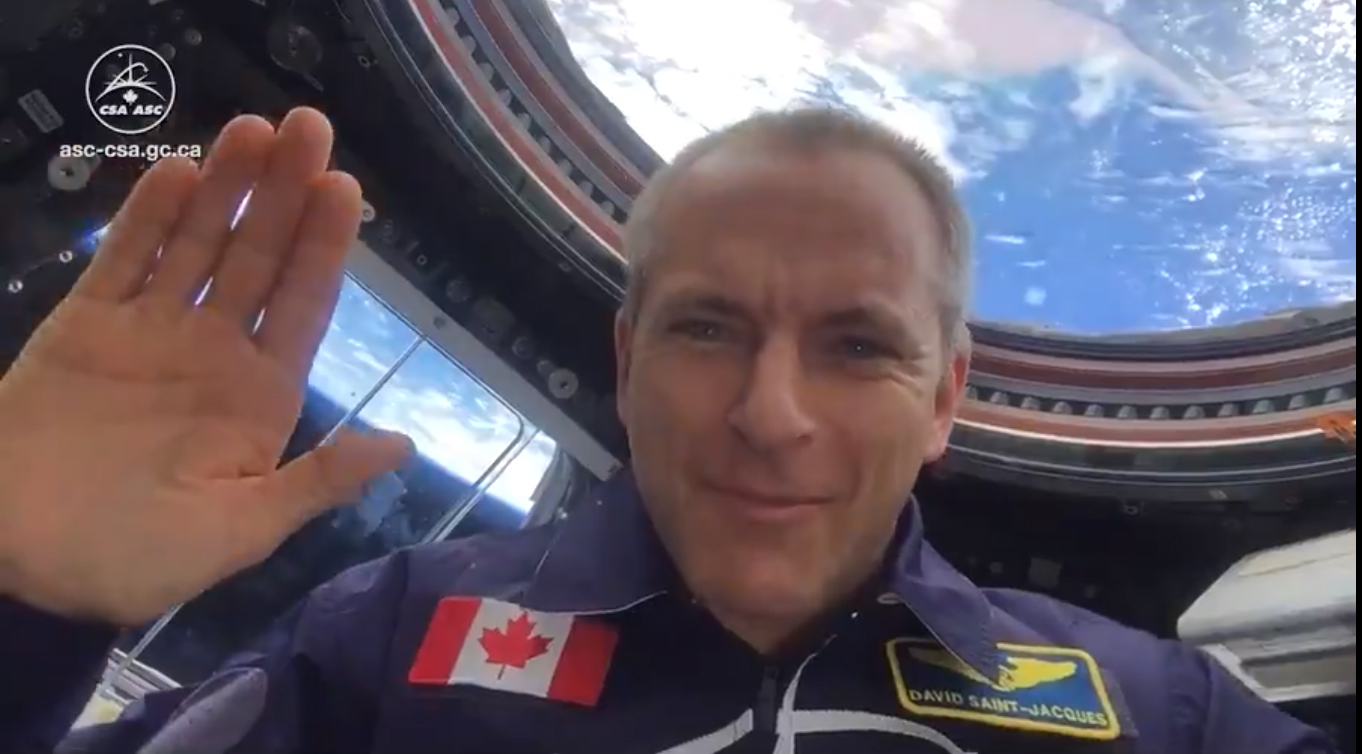Happy New Year from Space! Astronauts Ring in 2019 from Orbit
LAUREL, Md. — As people around the world celebrate the new year, astronauts in space are getting to work.
Canadian astronaut David Saint-Jacques recorded a festive video for the people of Earth Monday (Dec. 31) with a simple New Year's Eve message.
"Happy New Year!" Saint-Jacques said in English and French in separate videos posted to Twitter.
This New Year's Day, the three-person crew of the International Space Station have some chores and science to do. They're scheduled to spend the day unpacking a SpaceX Dragon cargo ship (which arrived earlier this month) and performing science experiments, NASA spokesperson Dan Huot told Space.com on Dec. 20. But the space travelers will get some time to rest.
"Whenever the crew is asked to work a holiday, though, they get an extra day off in the future to make up for it," he said in an email.
The station's current Expedition 58 crew consists of Saint-Jacques (of the Canadian Space Agency), NASA astronaut Anne McClain and Russian cosmonaut Oleg Kononenko of Roscosmos. Kononenko commands the crew.

The station crew isn't the only one working through the new year.
Get the Space.com Newsletter
Breaking space news, the latest updates on rocket launches, skywatching events and more!
Today, NASA's New Horizons spacecraft made a historic flyby of the Kuiper Belt object Ultima Thule. At a range of 4.1 billion miles (6.1 billion kilometers) it is the farthest-ever flyby of an object in our solar system. New Horizons scientists at the mission's operations center at Johns Hopkins University Applied Physics Laboratory in Laurel, Maryland are expecting to receive the first post-flyby signal from New Horizons later today at 10:30 a.m. EST (1530 GMT).

And still another space mission had a busy New Year's Eve.
NASA's OSIRIS-REx asteroid probe arrived in orbit around its target asteroid Bennu on Monday (Dec. 31).
"The team continued our long string of successes by executing the orbit-insertion maneuver perfectly," OSIRIS-REx principal investigator Dante Lauretta of the University of Arizona said in a statement. "Entering orbit around Bennu is an amazing accomplishment that our team has been planning for years."
Space.com staff writer Hanneke Weitering contributed to this report from New York City. Email Tariq Malik at tmalik@space.com or follow him @tariqjmalik. Follow us @Spacedotcom and Facebook.
Join our Space Forums to keep talking space on the latest missions, night sky and more! And if you have a news tip, correction or comment, let us know at: community@space.com.

Tariq is the Editor-in-Chief of Space.com and joined the team in 2001, first as an intern and staff writer, and later as an editor. He covers human spaceflight, exploration and space science, as well as skywatching and entertainment. He became Space.com's Managing Editor in 2009 and Editor-in-Chief in 2019. Before joining Space.com, Tariq was a staff reporter for The Los Angeles Times covering education and city beats in La Habra, Fullerton and Huntington Beach. In October 2022, Tariq received the Harry Kolcum Award for excellence in space reporting from the National Space Club Florida Committee. He is also an Eagle Scout (yes, he has the Space Exploration merit badge) and went to Space Camp four times as a kid and a fifth time as an adult. He has journalism degrees from the University of Southern California and New York University. You can find Tariq at Space.com and as the co-host to the This Week In Space podcast with space historian Rod Pyle on the TWiT network. To see his latest project, you can follow Tariq on Twitter @tariqjmalik.









